Blog
![Who uses Flutter? Flutter apps in 2024 [Update]](/_next/image?url=%2Fapi%2Fmedia%2Ffile%2FWho-use-Flutter-luca-bravo--scaled.jpeg&w=1920&q=75)
Who uses Flutter? Flutter apps in 2024 [Update]
In line with the earlier discussion on why Flutter is ideal for creating MVPs, this article goes deeper, presenting examples of notable companies that have used Flutter to develop their advanced products. Wondering who uses Flutter? In this article, you’ll find insightful Flutter examples that further illustrate the framework’s capabilities in creating mature, market-ready applications.
5. Google Classroom
Following the successful adoption of Flutter in GPay, Google Classroom has also made a significant shift to the Flutter framework. This transition has greatly enhanced the app’s performance and productivity, notably reducing the code size by 66%. This optimization has streamlined the app, making it more efficient for users.
Google Classroom facilitates seamless communication between students and teachers, both within and outside the classroom environment. Its intuitive design allows for easy class setup, efficient assignment distribution, and streamlined communication, making it an essential tool in the educational sector.

The COVID-19 pandemic in 2020 saw an exponential increase in Google Classroom’s usage, growing from 40 million to over 150 million users globally. This surge necessitated a more robust and consistent mobile experience. By adopting Flutter, Google Classroom achieved a 98% shared mobile code base, ensuring platform uniformity and significantly reducing technical debt.
A notable development in Google Classroom is the introduction of Practice Sets on the web. This feature, utilizing Flutter’s capabilities, offers interactive assignments and real-time feedback, which educators greatly appreciate. The success of this feature and the overall app underscores Flutter’s versatility and efficiency in application development, particularly in the education sector.
Overall, Google Classroom’s migration to Flutter is a testament to the framework’s ability to enhance user experience and operational efficiency in mobile applications.
4. PUBG MOBILE
PUBG MOBILE, a leading player in mobile gaming, has leveraged Flutter to enhance its global reach and performance. Boasting 1 billion players worldwide and 50 million daily active users, the game, developed by Lightspeed Studios and Krafton, offers an intense survival experience on a deserted island.
The strategic decision to integrate Flutter was driven by the need for an efficient cross-platform framework that accommodates Android and iOS users. The development team, skilled in Java, Kotlin, and Objective-C, found Flutter’s Dart language user-friendly and efficient. This transition to Flutter significantly reduced the front-end development effort by 80%, streamlining the coding process with a single codebase and ensuring platform uniformity.
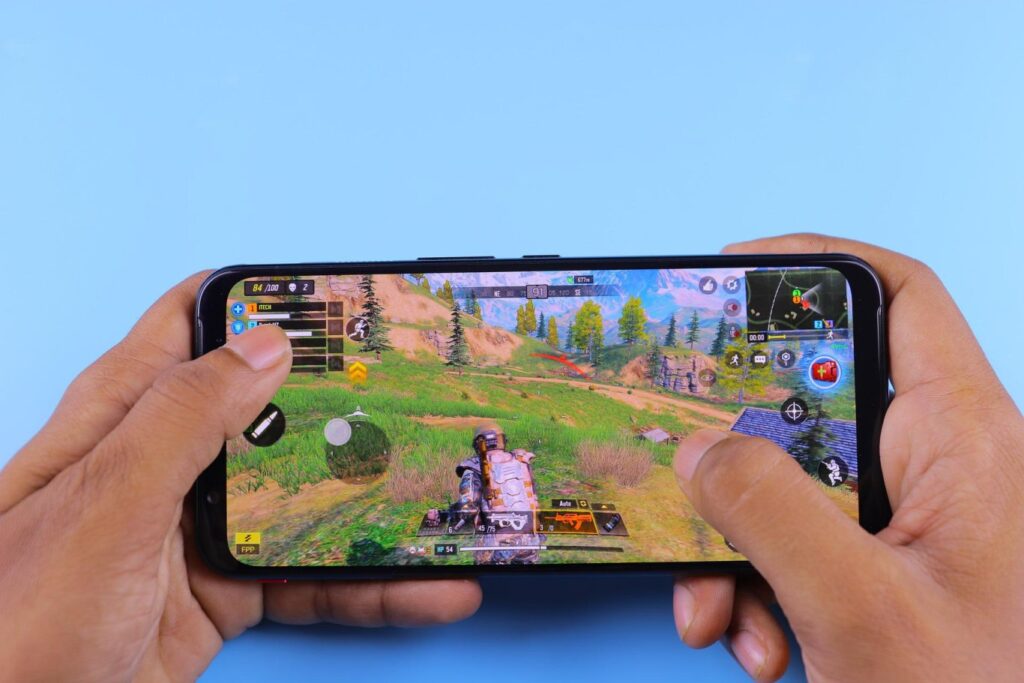
Flutter’s high performance, even with complex business logic, was a key factor in the game’s successful expansion, particularly for the in-game community module. This feature, actively used by 10 million users monthly, allows players to connect, share gameplay experiences, and engage with fans within the game. The module’s popularity underscores Flutter’s effectiveness in facilitating community interactions in gaming.
PUBG MOBILE’s commitment to continuous enhancement, as evidenced by introducing new items, maps, and modes, reflects the game’s adaptability and the developers’ focus on improving the gaming experience. The use of Flutter has not only optimized development processes but also contributed to the game’s consistent performance across multiple platforms.
Overall, PUBG MOBILE’s incorporation of Flutter highlights the framework’s ability to support the development of dynamic, high-performance mobile games that cater to a vast user base.
3. Toyota
Toyota, a renowned global automobile manufacturer, has embraced Flutter to develop its in-vehicle infotainment systems, marking a significant shift in its approach to in-car technology. Historically, Toyota developed its in-vehicle technology in-house but was drawn to Flutter’s capability to enhance user experience.
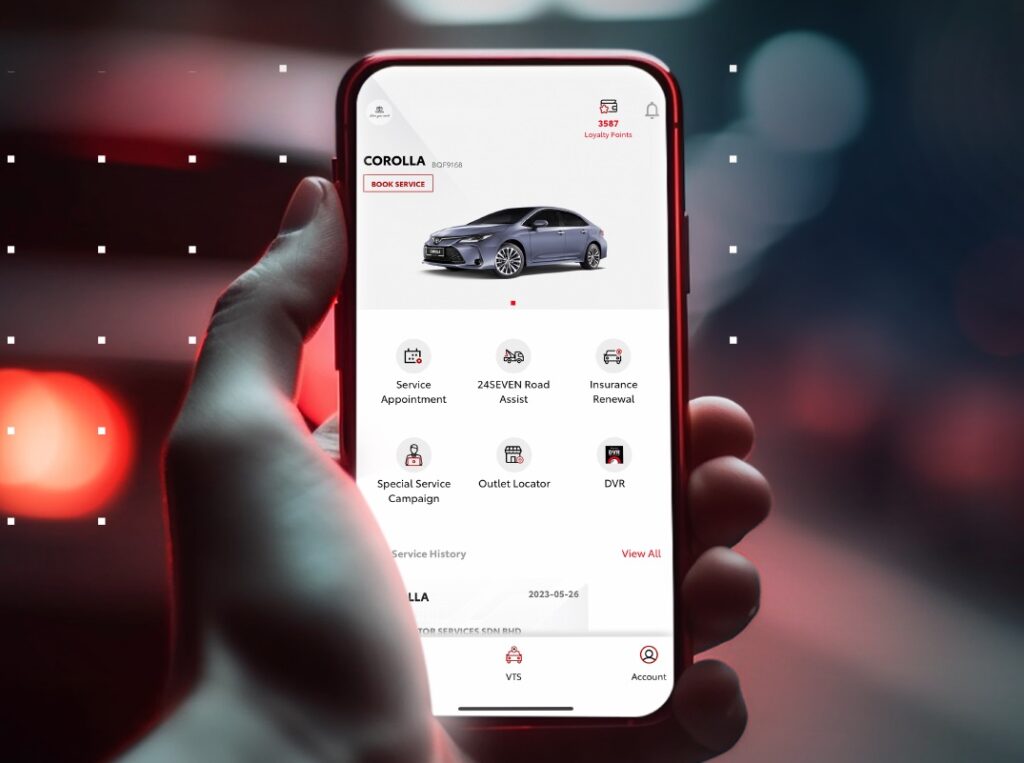
Key Aspects of Toyota’s Adoption of Flutter:
- Enhanced Infotainment Systems: Toyota aimed to match their high-standard driving experience with equally performant on-screen infotainment systems. Flutter’s high-performance rendering engine and Ahead-Of-Time (AOT) compilation features allowed Toyota to create a premium interface akin to a smartphone app rather than a traditional embedded system.
- Developer Experience: Flutter’s developer-friendly features, such as the ability to hot-reload apps on desktops and deliver to iOS and Android tablets, facilitated efficient user testing and faster feedback incorporation, enhancing the overall user experience.
- Flutter’s Embedder API: Toyota uses Flutter’s Embedder API for their Linux-powered infotainment systems. The API’s flexibility in cross-compiling and embedding the engine in the target environment has streamlined the development process.
- In-House Tools Development: Leveraging Dart and the Flutter SDK, Toyota has crafted several in-house tools, improving its software development lifecycle. Flutter’s declarative U.I. and code-as-configuration approach have created design tools that instantly generate and validate runnable code.
- Community and Open-Source Principles: Daniel Hall, Chief Engineer at Toyota Motor North America, highlights the pivotal role of Flutter’s open-source principles and the developer community in Toyota’s success. The expansive Flutter ecosystem has been instrumental in achieving Toyota’s developmental goals, with anticipations for the launch of its new infotainment system in future vehicles.
Toyota’s shift to Flutter showcases the framework’s adaptability and efficiency in the automotive industry, particularly in enhancing the digital experience within vehicles.
2. Crédit Agricole
Crédit Agricole Bank Polska, attuned to the evolving customer behavior in the banking sector, embarked on a strategic journey to revolutionize its digital offerings. Confronted with outdated native apps and shifting customer preferences towards digital banking, the bank built a new mobile application from scratch. This initiative was aimed at establishing a top-tier presence in the market. To achieve this, Codigee played a role by outsourcing skilled developers for the project, ensuring a blend of in-house expertise and external talent to bring this ambitious vision to fruition.

Key Highlights of Crédit Agricole’s Flutter Integration:
- Modern, Reactive, and Design-Focused: The team sought a technology that was adaptable to multiple platforms, could facilitate quick feature additions, was easy to maintain, and met stringent UX requirements for a seamless customer experience.
- Shift to Flutter: Opting against revamping existing apps, Crédit Agricole, in collaboration with LeanCode, a software studio specializing in mobile banking apps, chose Flutter for its cross-platform functionality and design-centric approach.
- Large-Scale Development: Over a year, a massive team of 250 people, including nearly 30 Flutter developers, worked on one of the largest Flutter apps to date. The development process was organized into business and technical squads, enhancing efficiency and focus.
- New Flutter-Based Design System: The team developed a design system that enabled easy component updates and addressed inconsistencies while maintaining a high level of design integrity.
- Substantial Time Savings and Enhanced Maintainability: The MVP of the new app, developed with Flutter, was launched after 12 months. This new system proved more manageable and cost-effective, offered quick adaptability to changes, and facilitated smoother task delegation among developers. The unified codebase eliminated the need for separate solutions for Android, iOS, or Huawei platforms, accelerating the delivery of new features.
- Impact on the Banking Industry: The transition to Flutter was hailed as a strategic move, aligning with the high standards of product development and security requirements in banking. With its standout animations and improved functionality, the new app marked a significant leap for Crédit Agricole in the competitive banking market.
Crédit Agricole’s choice of Flutter highlights the framework’s potential in creating scalable, efficient, and user-friendly banking applications, reinforcing Flutter’s position as a viable solution for enterprise-level app development.
1. Fitatu
Fitatu, a prominent health and fitness app, underwent a notable technological transformation by transitioning from Cordova to Flutter. This shift was part of a strategic collaboration with Codigee to enhance the app’s performance and user experience.
Initially developed on the Cordova platform, Fitatu faced the need for a more advanced and efficient framework to keep up with the evolving mobile app development demands. The decision to adopt Flutter was driven by its superior cross-platform development capabilities, catering to Android and iOS users.

The transition to Flutter involved meticulous reimagining and rewriting of various app modules. This required technical expertise and a deep understanding of how to integrate Flutter’s functionalities with the existing framework. The Codigee team, proficient in Dart and skilled in native app development using Swift and Kotlin, successfully navigated this complex integration.
The use of Flutter brought about significant improvements in Fitatu’s performance. Its high-performance rendering engine and streamlined coding process, facilitated by a unified codebase, resulted in enhanced app efficiency. The ability to hot-reload apps and incorporate feedback rapidly contributed to an improved development lifecycle and user experience.
Furthermore, the transition to Flutter offered cost-saving app maintenance and development advantages. By adopting a framework that supports both major mobile platforms with a single codebase, Fitatu achieved a more efficient and scalable development process.
Fitatu’s migration to Flutter indicates the framework’s potential to transform mobile applications, especially in the health and fitness sector. It underscores Flutter’s capacity to enhance app performance, facilitate developer efficiency, and ensure a seamless user experience across multiple platforms.
2023 List
5. Realtor.com

Realtor.com, a real estate listing website, adopted Flutter to enhance its mobile application. The objective was to boost the app’s performance and accelerate development. Initially, Realtor.com encountered challenges in scaling their mobile apps due to the existence of separate teams for Android and iOS development. This led to inefficiencies, such as resolving the same issues twice and discrepancies in features and UI design between the two apps.
The Realtor.com app is an indispensable tool for users seeking real estate listings. It needed to be swift, responsive, and provide a seamless experience across different platforms. That’s why the team chose Flutter. The first feature they developed using Flutter was their Monthly Cost Calculator, which was implemented without any negative impact on performance or user experience.

Flutter’s single codebase allowed the Realtor.com team to write once and deploy on iOS and Android, significantly reducing the development time. Additionally, the app’s performance was improved, providing a smoother and more responsive user experience. One major project was rebuilding their listing detail page with Flutter. This page, which receives over 400 million monthly views, was rebuilt as a collection of reusable widgets and leveraged the Flutter widget composition.
However, the transition to Flutter was challenging, and the team had to ensure the app maintained its functionality and performance. With careful planning and execution, the team used a strategy to limit risk, keeping their existing page and releasing the new Flutter screens behind a Firebase remote config.
Despite these challenges, the team successfully transitioned the app to Flutter. The new app has been well-received by users, who have praised its improved performance and seamless experience across different platforms. The success of the Realtor.com app demonstrates the potential of Flutter in developing high-performance real estate apps. It shows that Flutter can be a powerful tool for real estate companies looking to enhance their mobile offerings.
Curious about Flutter in real estate apps? Learn more in our previous blog post - don't miss out!
4. Square
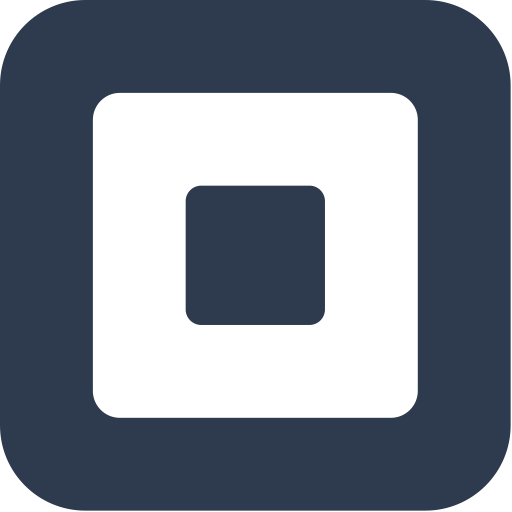
Square, a prominent player in the financial services and mobile payment industry, has uniquely embraced Flutter. They’ve created a Flutter SDK to facilitate easy payment processing in Flutter apps. The Square In-App Payments SDK is designed for fast and accurate card entry in mobile apps and is fully customizable to match the app.
The team’s efforts culminated in the successful development and launch of the Flutter SDK. Developers have warmly welcomed it, commending its user-friendliness and the fluid payment experience it facilitates.
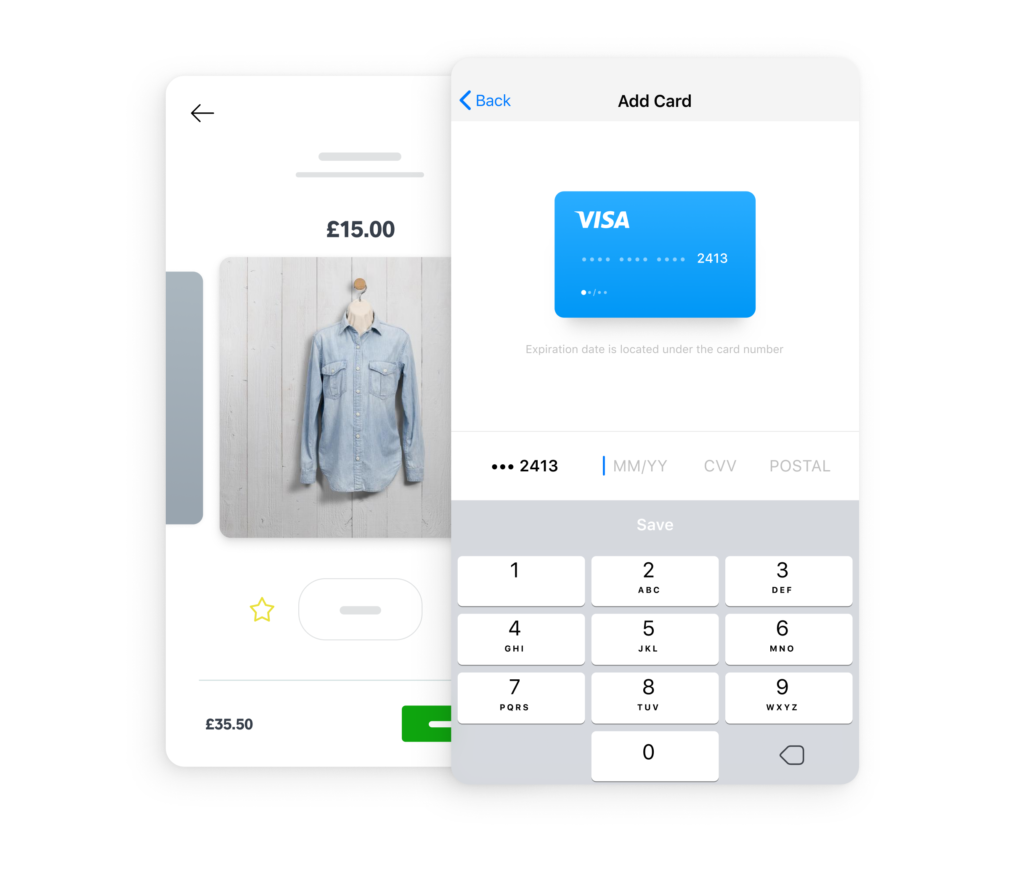
The triumph of the Square Flutter SDK underscores Flutter’s potential in the financial services sector. It exemplifies how Flutter can be an influential tool for companies aiming to simplify payment processing and elevate the user experience.
3. Invoice Ninja

Invoice Ninja, a invoicing and payment processing platform, has leveraged Flutter to enhance their mobile application. The goal was to provide a seamless, efficient, user-friendly invoicing experience across different platforms. The Invoice Ninja app is a critical tool for businesses and freelancers who need to manage invoices and payments on the go. It needed to be robust, responsive, and provide a consistent experience across iOS and Android, which led the team to choose Flutter.
The Invoice Ninja team praised Flutter for its ability to compile a single Dart codebase to produce web, iOS, Android, Windows,macOS, and Linux apps. Despite having a small team, the company managed to keep up with the competition due to the ease of working with Flutter. They also used Codemagic for continuous integration and delivery, building their app about five to ten times per month.
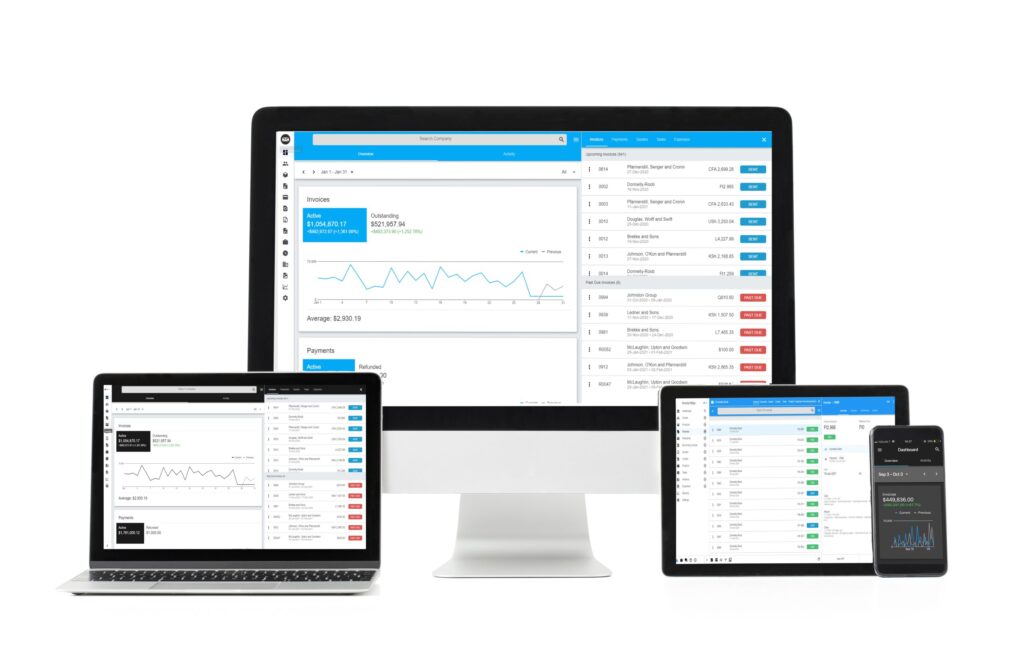
Leveraging Flutter’s unified codebase, the Invoice Ninja team could code once and deploy on iOS and Android, drastically cutting down the development timeline. That also enhanced the app’s performance, resulting in a smoother and more responsive user experience.
Despite facing challenges, the team successfully transitioned the app to Flutter. Users have warmly welcomed the new app, applauding its enhanced performance and seamless cross-platform experience.
The Invoice Ninja app’s success demonstrates Flutter’s potential in developing high-performance invoicing apps. It shows that Flutter can be a powerful tool for companies looking to enhance their mobile offerings in the financial and business sector.
2. Philips Hue
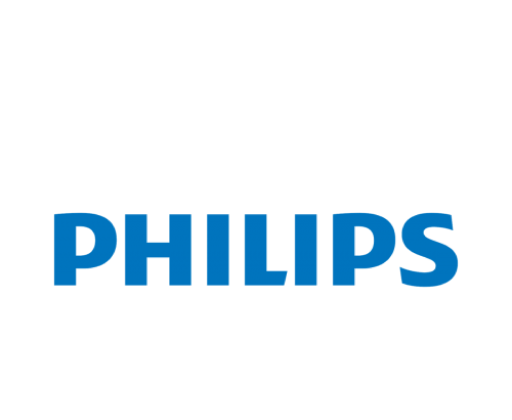
Philips Hue, a trailblazer in intelligent lighting solutions, has harnessed the power of Flutter to upgrade their mobile application. The app is vital to the Philips Hue ecosystem, enabling users to manipulate their lighting systems directly from their mobile devices.
The Philips Hue app required high responsiveness and a seamless user experience across different platforms, so the team chose Flutter. The company began experimenting with Flutter in early 2018, and by 2019, they had released two Flutter-based apps to control their Hue Bluetooth lights and the Hue Sync box. As of 2020, Philips Hue was using Flutter in all their mobile application.
The transition to Flutter had its challenges. The team had to ensure the app maintained functionality and performance during the transition. This required meticulous planning and execution.
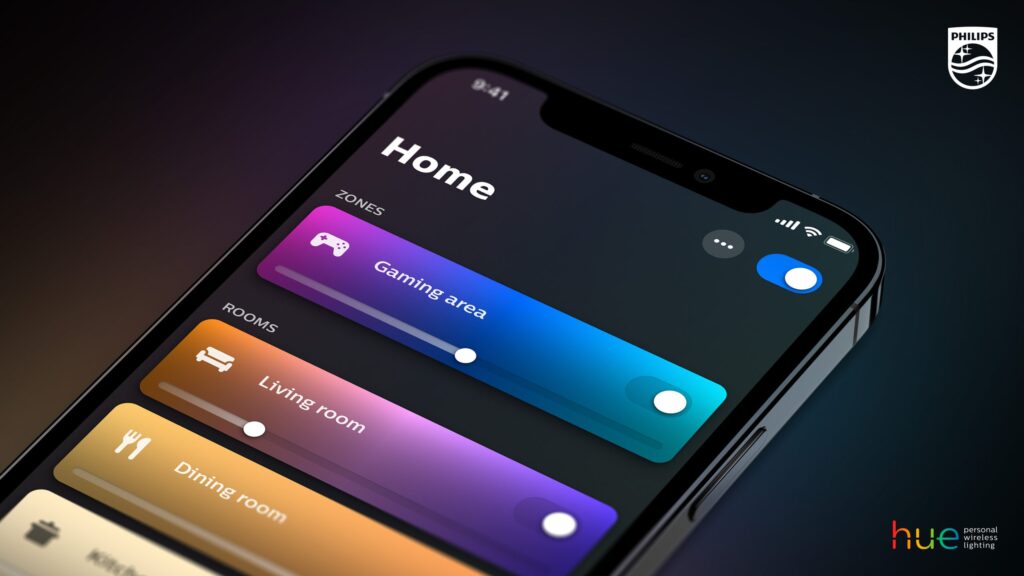
After the migration began, they discovered that working with Flutter was much less labor-intensive. As a result, some teams were delegated to more essential areas. The programmers could focus on the stability of the connection between the user’s phone and their intelligent lighting systems and on developing new functionalities.
The new version of the Philips Hue application was made available across different platforms in less time than expected, and the team has significantly improved its release cycle by creating the CI/CD process. It simultaneously enables automatic application testing, implementation, and publication of the application to both platforms.
The success of the Philips Hue app underscores Flutter’s potential to develop high-performance intelligent home apps. It proves that Flutter can be a potent tool for companies aiming to augment their mobile offerings in the innovative home sector.
1. Wolt
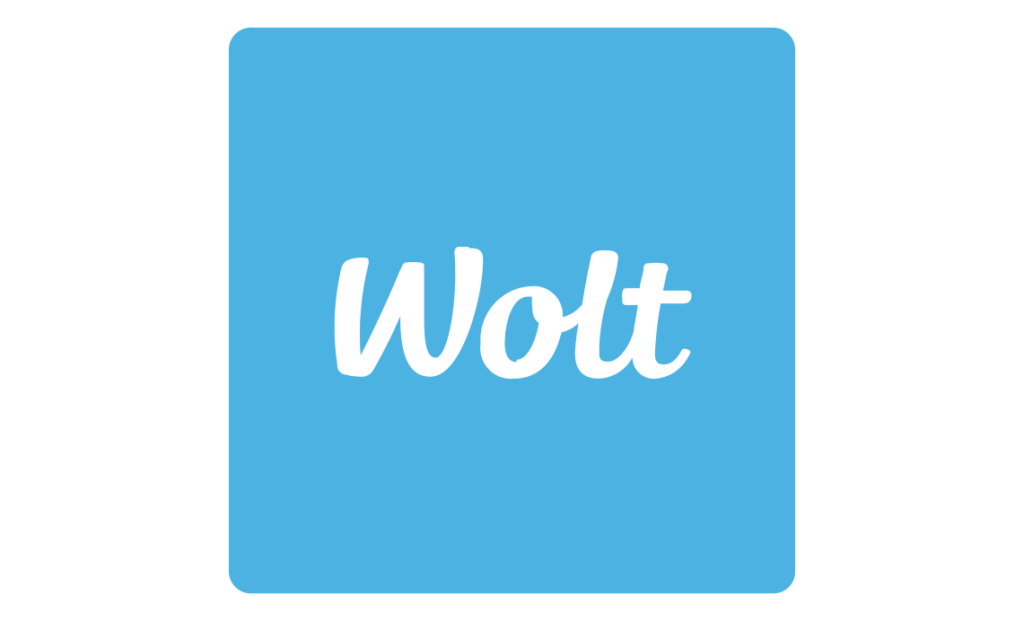
Wolt, a renowned food delivery service, has effectively utilized Flutter to revamp its mobile application for retail and restaurant partners. The app, a crucial tool for managing orders and deliveries, required a robust framework that could deliver a consistent experience across iOS and Android platforms. That led to the selection of Flutter, a decision influenced by the team’s extensive mobile development knowledge and the potential they saw in Flutter’s single codebase.
The development process was significantly expedited by Flutter’s single codebase, enabling the Wolt team to build the first version of their app in just seven weeks. This swift development was a testament to Flutter’s efficiency and ability to streamline the app development process. The team’s experience with mobile development and willingness to embrace new technologies played a significant role in this rapid development.
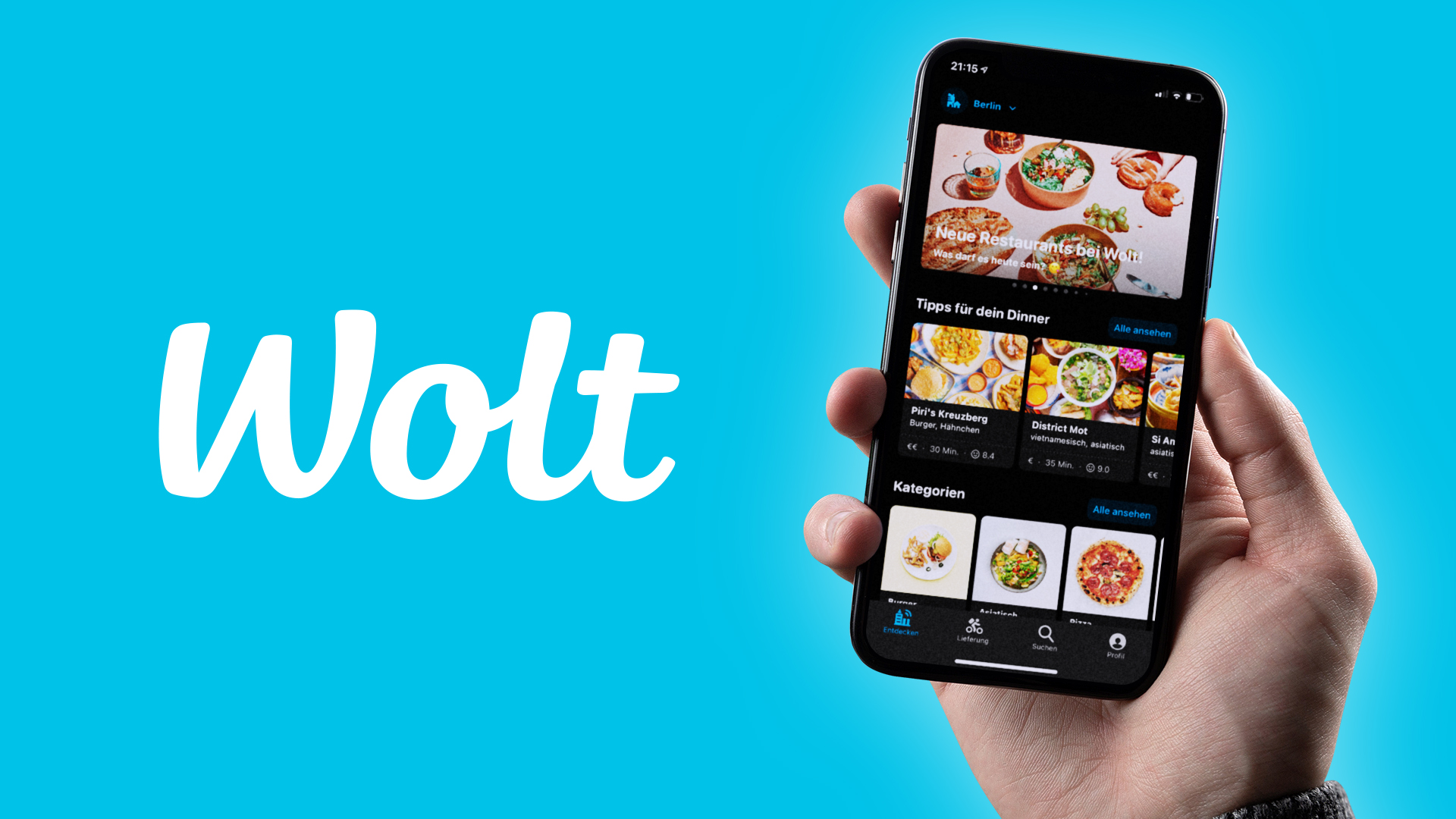
Despite the challenges encountered during the transition, such as setting up continuous integration for iOS, the team successfully migrated the app to Flutter. The programmers were able to focus on enhancing the stability of the connection between the user’s phone and restaurant systems and on the development of new functionalities. They tested the app in a live market within a few months of starting the project, demonstrating its robustness and reliability.
The successful deployment of the Wolt partner app across different platforms underscores Flutter’s potential in the food delivery industry. It exemplifies how Flutter can be instrumental for companies aiming to enhance their mobile offerings time-efficiently. This case study of Wolt’s experience with Flutter provides concrete proof of Flutter’s benefits in mobile app development, especially in terms of speed and efficiency.
2022 list:
5. Nubank
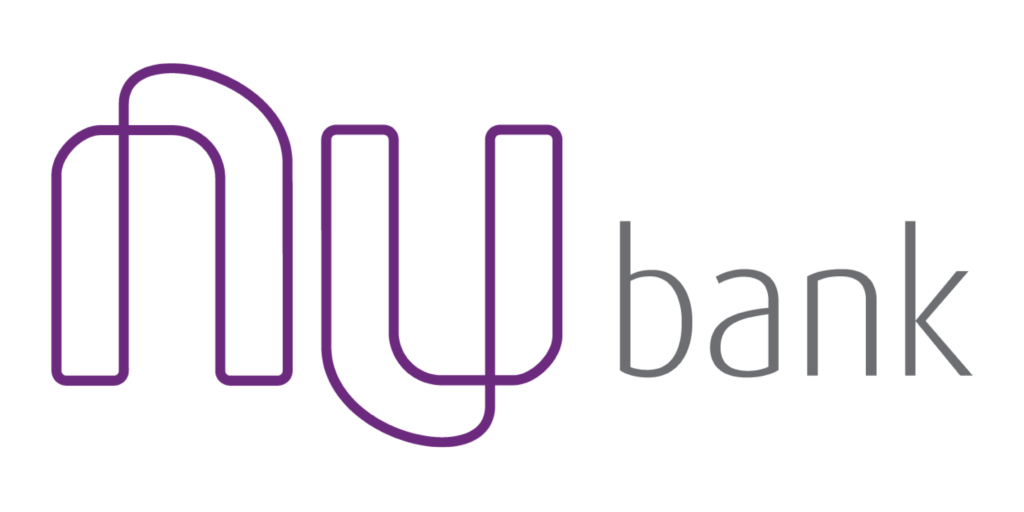
Nubank, a neobank from Brazil, opens our list. Neobanks are banks that, unlike traditional physical branches, offer their services exclusively online. With 52.4 million customers in Brazil and 1.51 million in Mexico and Colombia, Nubank was the highest-rated independent neobank in the world, and their mobile app boasts 100 million+ downloads on the Google Play Store.
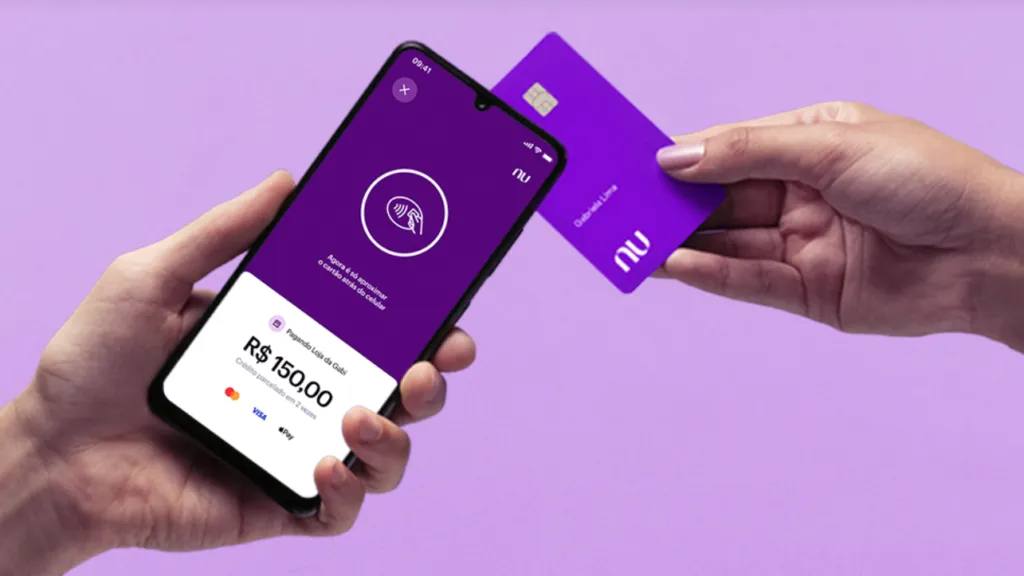
The Nubank mobile application was developed in the classic model of two independent teams: IOS and Android. The bank’s dynamic development generated the need to provide new functionalities. Unfortunately, they were unable to source and train new developers on all platforms at the same pace. It translated into constant fluctuations and disproportion between the creative possibilities of each of the teams. No wonder, new functionalities were released at different times for each version, which hurt customer experience. Moreover, such duplication of work seemed to be an unnecessary waste of time for the company.
To meet the challenges, Nubank decided to move its application to a cross-platform solution. They appointed a special team, whose task was to analyze the tools available on the market and recommend one that best suits their needs. The result of this analysis was the choice of Flutter as the technology to which they transferred further development of their applications.
As the main reasons for their choice, they pointed out:
- Qualitative documentation and community support.
- Productivity-enhancing features like hot-reload.
- Extensive test support.
They started the migration process by creating all the new functionalities directly in Flutter and implementing them into the current native applications. At the same time, they worked on rewriting the old functionalities to Flutter to be able to combine the entire application into one project.
Additionally, the Nubank team noted several other positive effects of the Flutter implementation, among others:
- Communication between different teams, for example, design and UX, has improved significantly.
- Using a single library of components allowed them to fully focus their energy and creativity on its development.
Remaining in the world of finance, Crédit Agricole Poland is also worth mentioning.They migrated its mobile application to Flutter in 2022.
4. BMW

The My BMW application from the Bavarian automotive giant facilitates many options in everyday use of this brand’s vehicles. Users can not only remotely control the car’s systems (e.g. start the air conditioning), but also arrange a service visit or plan a route.
Unfortunately, the application required numerous changes before it was introduced to a new market. This translated into the greatest difficulty the BMW development team had to face: maintaining Android and IOS applications across 45 countries.
To be able to maintain the current quality, they needed a new tool that would enable the simultaneous publication of new functionalities for all 90 variants of the application. Moreover, to meet their business ambitions, they needed to shorten the time required to implement the application in the new market.

Similarly to Nubank, BMW started by creating a team to research the available cross-platform tools. The result of the analysis was the choice of a solution based on web technologies. Unfortunately, after several attempts to transfer the application, the new tool turned out to be too limited. At that moment, the developers decided to test Flutter.
After the migration began, they found out that working with Flutter was much less labor-intensive. As a result, some teams were delegated to more important areas. The programmers could focus on the stability of the connection between the user’s phone and his car, and on the development of new functionalities.
The new version of the My BMW application was made available in 47 countries within less than a year from the start of working with Flutter. Additionally, the BMW team has significantly improved its release cycle with the creation of the CI/CD process. It enables automatic testing, implementation, and publication of all 94 variants of the application to both platforms at the same time.
It is worth mentioning that BMW is not the only automotive giant benefiting from Flutter. Toyota uses it to create and develop systems for its cars.
3. Alibaba
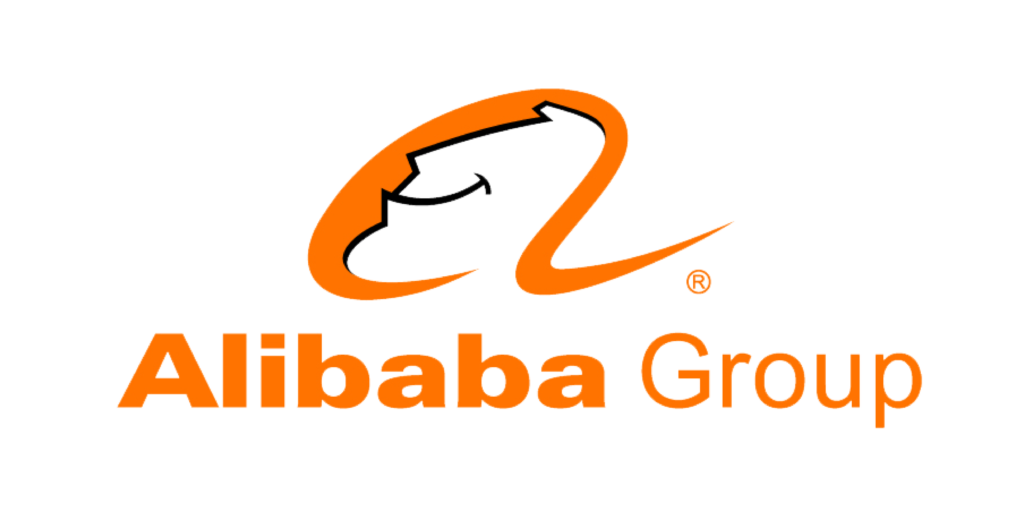
The Alibaba Group is a Chinese technology company with a rich and diversified portfolio of investments. It is best known for its activities in the field of e-commerce, being the second-highest-valued e-commerce company in the world. Their app for selling used products, Xianyu, is China’s largest second-hand market and boasts 200 million registered users.
Thanks to Xianyu, private individuals and small businesses sell used products. The preview photos published there were of varying quality and size, which harmed the overall performance of the application. The development team was looking for a solution that would speed up Xianyu, especially on pages with a large number of responsive elements and graphics.

The developers decided to combine their native application with Flutter while keeping the existing functionalities unchanged. They implemented all the new ones directly with Flutter.
The biggest step was to implement the new product details page. That is the most visited and most complex screen in the entire application. At the same time, this page had many performance problems caused by displaying many graphics and responsive parts of the interface.
The Xianyu team shared that, thanks to the implementation of Flutter, they improved the screen rendering time in the application by as much as 30%.
In the e-commerce industry, Groupon also deserves attention, which, already in 2018, started integrating Flutter in its application for sellers.
2. Tencent
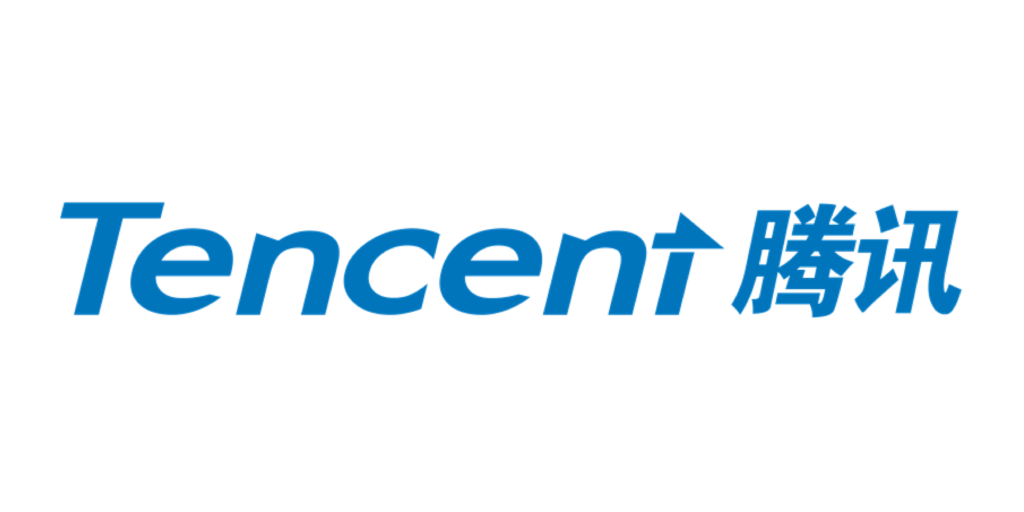
Tencent is another technology giant from China on this list. They own Riot Games and are a major shareholder in Epic Games, Tesla, Spotify, and hundreds of others. Their roots are in the production of video games and they excel the most in the electronic entertainment industry.
Stock market valuation ranks the company as the eighth technology company in the world, and its revenue from electronic entertainment alone makes it the world’s largest producer of video games.
However, in the Chinese market, they are known primarily as the owner of WeChat. An application that is used by 1.2 billion Chinese and over 100 million people worldwide every day.
Tencent is making good use of Flutter, both moving current apps and also creating them from scratch. Developers shared their experience using Flutter for various Tencent applications: English AI Teacher, Now Live, K-12, Mr. Translator, Qidian, and DingDang.
According to the developers from Tencent, Flutter’s biggest advantages are:
- Low entry threshold. Developers in Tencent were able to learn Dart (the programming language of Flutter) in 1-2 weeks.
- One code base for several platforms.
- Adaptation of the easily created interfaces to many different screens.
- Smooth animations, rendered at 60 frames per second.
- Accelerated debugging by as much as 80% and reduction in developer’s effort by 33%.
- General stability and failure-free operation of the created applications.
The games created in Flutter are also worth mentioning. It seems that the 4 Pics 1 Word quiz game, whose creator boasts over 250 million users, was the most successful. However, to see more possibilities of Flutter in game development, I recommend the demonstration pinball created by Google.
1. Google
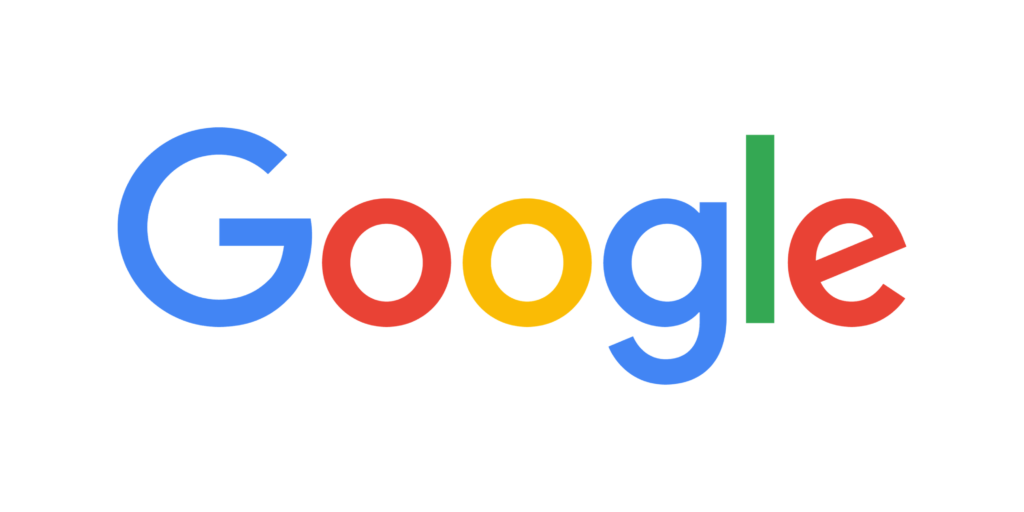
The number one of this ranking couldn’t be anybody else than the creator of Flutter – Google – the world’s third largest tech company, following Apple and Microsoft.
Google created Flutter in 2017 and since then it has not only been constantly improving it but also using it for its own applications. Thanks to this, the developers in Google responsible for the development of Flutter can get first-hand feedback from their colleagues, who deal with creating apps. Google used Flutter in three of its high-profile products: Google Pay, Google Ads, and Stadia (the last one is however already canceled).
Google Pay seems to be the most spectacular example.
The starting point was the implementation of Google Pay, which had 100 million active users and 1.7 million lines of code. The plan was to scale the application to the new markets. Aside from the size of the app, the greatest difficulty was the fact that most of the current users used Android, while new countries, where Google wanted to expand, were dominated by iOS.
Initially, they didn’t plan to change the implementation of the existing functionalities, but only to add new ones using Flutter. However, this approach didn’t solve the problem of scalability to new countries because with each new location, numerous changes to the native code had to be made. Therefore, the developers decided to investigate the possibility of rewriting the entire application. They estimated that development for both platforms requires doubled amount of work. With Flutter though, it only required 1.2 times more work compared to working on one platform.

They started the process of rewriting the application by blazing the trail with three senior developers. Their task was to rewrite the vertical cross-section of the application (home page, chat, and payments) and share feedback from the process with the rest of the team.
The feedback from the research team was so positive that Google decided to rewrite the entire application from scratch using Flutter. Fifty developers were transferred to the project. Their task was to learn Dart and Flutter and then rewrite the application for beta launch in six months.
When beta turned out to be successful, another hundred engineers were involved in the project. They started rewriting the entire application while maintaining the native code. All that with almost 300 functionalities and 100 million active users monthly.
The rewritten application, despite adding new functionalities, was 35% smaller. 1.7 million lines of code got reduced to 1.1 million. The development team estimated that using Flutter saved 60-70% of their time because the Flutter app is much easier to maintain.
For more examples of apps developed in Flutter by companies like Philips, iRobot, and eBay, go to https://flutter.dev/showcase.
Get latest insights, ideas and inspiration
Take your app development and management further with Codigee
Let's make something together.
At Codigee, we value transparency, efficiency, and simplicity. No overengineering. No wasted time.
Just straight-up execution.
We are obsessed.
Every billion-dollar company started with one decision, one step, one iteration. The key? Taking action and executing fast.

